
A very short video explaining the difference between published and unpublished courses in Cavas
- Subject:
- Professional Learning
- Material Type:
- Visual Media
- Author:
- Cori Sowers
- Date Added:
- 09/15/2021

A very short video explaining the difference between published and unpublished courses in Cavas
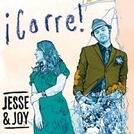
This resource uses a song to talk about commands and toxic relationships. There is also a portion used to review descriptions of people.

This video is part of the Continue to Know with WHRO TV series. Watch Chautauqua Hopson teach about the correct spelling of frequently used words.

Using given congruent triangle statements, students will create congruent triangles and find the lengths of all the sides.

examines one of the most extensive and best-preserved concentrations of prehistoric rock art in the U.S. See photos and learn about the people who made these 250,000 drawings on rocks at China Lake, California, 1000 to 3000 years ago.
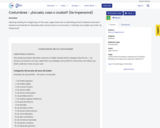
Opening reading for a beginning-of-the-year, upper level unit on describing school. Students read each sentence and decide if it describes their school, home or community. CI-friendly, but models use of the "se impersonal."
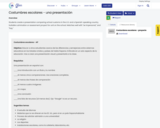
Students create a presentation comparing school customs in the U.S. and a Spanish-speaking country. Suitable culmination or assessment proyect for unit on the school. Matches well with "se impersonal," and "hay."

Cotton Candy Poem Analysis (figurative language and poetic structure)

Visualize the electrostatic force that two charges exert on each other. Observe how changing the sign and magnitude of the charges and the distance between them affects the electrostatic force.

This video is part of the Learn and Grow with WHRO TV series. Watch Xenia Claire teach about adding and subtracting with practical problems using a variety of strategies.

This video is part of the Learn and Grow with WHRO TV series. Watch Xenia Claire teach about adding and subtracting with practical problems using a variety of strategies.

TSW learn how to argue a position and introduce a counterclaim. As most of our writing for Grade 8 is persuasive or expository, this is a good assignment for any week within the first semester (Q1 or Q2). This will follow the same outline of writing as their 42 SOL prompts. The question is “should information be restricted in all areas by the government or in only certain areas?”
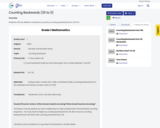
Students will use different materials to practice counting backwards from 30 to 0.

The purpose of this podcast is for students to listen and participate in counting backwards from 30 to 1. Students will be able to orally count by ones backwards while following moving to different speeds.

In this lesson, students will practice orally counting to 100 and gain number sense to be able to sequence numbers correctly.

Determine the value of a collection of like coins whose total is 100 cents or lessMathematics Instructional Plans (MIPs) help teachers align instruction with the 2016 Mathematics Standards of Learning (SOL) by providing examples of how the knowledge, skills and processes found in the SOL and curriculum framework can be presented to students in the classroom.

1.1cd Counting Co-Teaching MIP
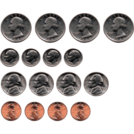
With this lesson, students will practice the Math Standards of Learning around counting and comparing values of money and creating equations while also learning computer science terminology for problem solving. Students will learn to start counting change with the highest value coin possible.

Place Value, Composing and Decomposing NumbersMathematics Instructional Plans (MIPs) help teachers align instruction with the 2016 Mathematics Standards of Learning (SOL) by providing examples of how the knowledge, skills and processes found in the SOL and curriculum framework can be presented to students in the classroom.

Counting and writing numerals from 0 to 110Mathematics Instructional Plans (MIPs) help teachers align instruction with the 2016 Mathematics Standards of Learning (SOL) by providing examples of how the knowledge, skills and processes found in the SOL and curriculum framework can be presented to students in the classroom.